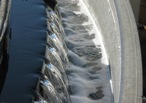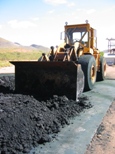
Sustainable Water Treatment Is a Three Part Effort
- By David Kratochvil
- Nov 13, 2009
With climate change and contamination threatening global sources of water supply, "sustainability" has evolved from being a discussion topic to an actionable item for industry, communities, and regulators. Water shortages are already having an impact on food supplies, energy production and health.
When addressing the issue of water supply and treatment, sustainable practices are driven by three key factors:
- environment,
- economics and
- society.
The environmental drivers of sustainability include improving access to safe water supplies and tightening regulations governing water quality and use. On the economic front, reducing costs, avoiding liability, and improving revenues are all part of the sustainability picture. Then there are the social drivers in which communities must be assured of a safe, clean water supply and support a company’s “social license” to operate.
Several industrial water users ─ including leaders in the resource and power generation industries ─ are applying new technologies to reduce water consumption, increase water reuse, and convert waste into a useful resource.
Environmental sustainability
Regulation has been a powerful force in determining access to water supplies, water quality, and wastewater discharge requirements. In some cases ─ especially when demand on local water supplies is excessive ─ regulators are calling for as much as 90 percent of wastewater to be reused in industrial processes. This, in turn, causes companies to continually seek new and better technologies that treat water, minimize water usage, and improve recycling performance.
Some technologies that have been in use for some time are falling short of meeting the three sustainability pillars. Lime treatment, for example, has been a mainstay of the mining industry for decades. However, this process can produce a metal-laden toxic sludge that must be maintained in vast storage ponds for ongoing monitoring and control. As a result, the stored sludge can become a long-term environmental liability for the mining company and the communities in which they operate. Membrane systems have proven to be highly effective in treating wastewater for industrial processes and meeting the standard for drinking water. Yet these systems can generate a crystalline byproduct that demands special handling and disposal. Membrane systems also consume high amounts of energy and can have limited recycle rates, as low as 50 percent, limiting water reuse.

BioteQ's water treatment plants recovered close to 3,000,000 pounds of metal contaminants from the environment in 2008. The metal byproducts are sold to refineries and recycled into useful products.
A water treatment process that is gaining ground in the mining industry is sulphide-precipitation. This technology removes toxic heavy metals from contaminated wastewater to produce clean water that can reused or safely discharged. Rather than creating a sludge by-product that requires special disposal, the process recovers metal concentrates, allowing sites to convert contaminated waste into useful products for resale. One U.S. operation, for example, has been able to reuse 2.8 billion liters of wastewater a year and recover close to 1.3 million pounds of metal contaminants.
New ion exchange technologies that remove sulphate from wastewater have been successfully tested for power generation applications to treat cooling water and blowdown from flue-gas desulphurization systems. These processes produce clean water that reduces scaling of equipment and a clean gypsum byproduct that can be recycled into building products and fertilizers. In addition, ion-exchange processes consume up to 90 percent less energy than comparable membrane systems, and deliver improved water recovery rates up to 95 percent.
Economic sustainability
The ability to remove toxins from a site and recycle them into useful and marketable products plays a large part in ensuring economic sustainability in water treatment. By reclaiming metal content for refining and resale, the sulphide-precipitation process can turn a cost center into a revenue generator and reduce the life cycle costs of water treatment. At the same time, removal of the toxins means that the water can be reused for industrial processes or safely discharged to the environment for recycling downstream into municipal water supplies. Recycling rates can easily exceed 90 percent. BioteQ’s sulphide technologies, for example, removed 3 million pounds of metal contaminants in 2008 for refining and reuse, which generated close to $7.8 million in revenues.
Jiangxi Copper Company Ltd., one of China’s largest copper producers, now uses sulphide-precipitation water treatment at its Dexing site. In its first year of operations, the site treated more than 5.6 billion liters of water and recovered 1.3 million pounds of copper from wastewater for refining and sale. At full capacity, the plant is expected to recover up to 3.6 million pounds of copper annually.
In addition to short-term revenue generating streams, life cycle costs are an equally important consideration for economic sustainability. This entails analyzing the most cost-effective approach for using resources over the lifespan of a project, taking into account capital, operating, and maintenance costs – including disposal.
Sulphide-precipitation and ion-exchange technologies can lower life cycle costs because they can generate revenue to offset treatment costs, and have comparatively low capital and operating costs. Importantly, these technologies reduce long-term site liabilities by producing no waste for disposal.
Social sustainabilityIf an industrial operation fails to deliver social and environmental benefits, it will struggle to win community buy-in and permits. Responsible water treatment practices must take into account start-up, ongoing operations and potential environmental legacies that can impact a site long after closure.
For example, companies in the mining industry have applied newer technologies to clean up abandoned sites and reclaim land for their communities. In Breckenridge, Colo., the town applied new water treatment processes to deal with the acid mine drainage at a long-abandoned silver and zinc mine and at the same time created 1,800 acres of parkland. In addition to the newly reclaimed green space, the municipality was able to improve water quality to support fish populations in a nearby river.
More operations are putting greater effort into adopting a holistic approach to wastewater treatment. The successes to date indicate that this trend will continue to grow in our efforts to achieve sustainability.
About the Author
David Kratochvil is the president and chief operating officer of BioteQ Environmental Technologies, a Vancouver-based water treatment company that applies innovative technologies and operating expertise to solve challenging water treatment problems.